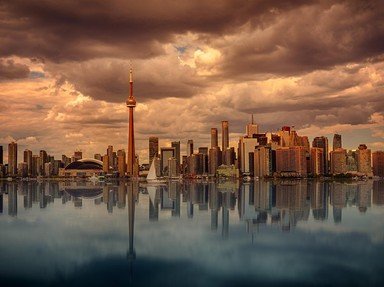Quiz Answer Key and Fun Facts
1. What is the national animal of Canada?
2. Which large Canadian island is nicknamed "The Rock" for its rugged, windswept landscape?
3. What is Canada's longest river?
4. What global time-keeping system was first proposed by Canadian engineer Sanford Fleming in the 1870s?
5. In the 1940 Ogdensburg Agreement, Canada established a formal alliance with which country?
6. What is Canada's tallest mountain?
7. What is the world's longest freshwater beach, located in Ontario, Canada?
8. Which of these iconic Canadian foods was originally invented by Indigenous peoples?
9. Which Canadian actor is known for his roles in "La La Land", "The Notebook", and "Barbie"?
10. Which of the following was NOT one of the four British provinces united as the Canadian Confederation in 1867?
Source: Author
JJHorner
This quiz was reviewed by FunTrivia editor
agony before going online.
Any errors found in FunTrivia content are routinely corrected through our feedback system.
